Electronic Car
Remote-controlled car built and operated via smartphone.
Author: Bontas Adrian-Cosmin
GitHub Project Link: https://github.com/UPB-FILS-MA/project-adriancosm1n
Description
Picture this: a car you can drive using your phone. That's exactly what I'm making! It's a cool little car you can control with an app on your personal phone. You can make it go forward or backwards, left or right, only by tapping on your screen. It is super fun to play with and it's an interesting way to learn about how things work in electronic applications!
Motivation
I picked this project simply because I love cars. They're exciting and fun, and I can't get enough of them! Building a remote-controlled car that I can control with my phone lets me combine my passion for cars with learning about technology. It's like bringing two awesome things together into one cool project. Plus, working on something I'm so passionate about makes the whole experience even more enjoyable. So, that's why I decided to go for it!
Architecture
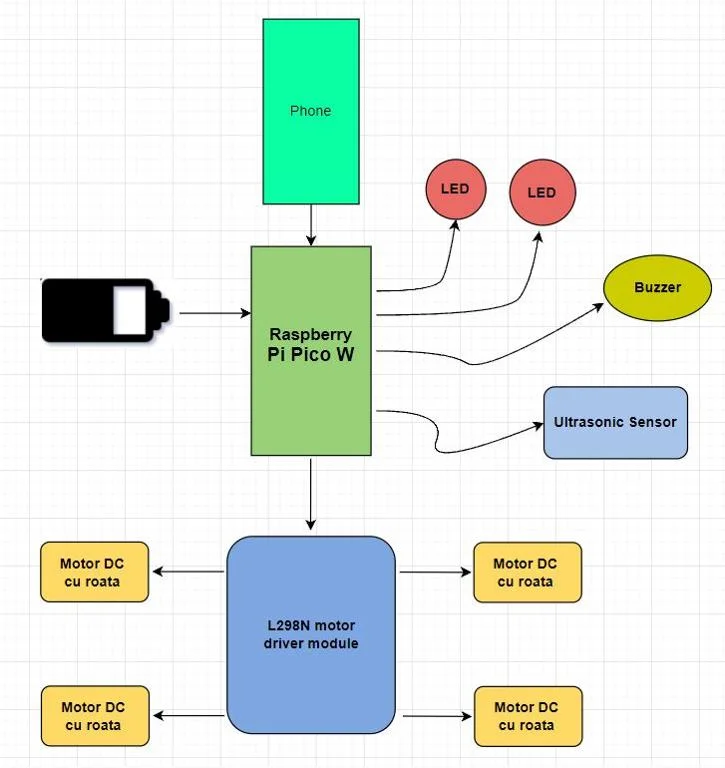
This project diagram illustrates the connectivity of the system utilizing a Raspberry Pi Pico W as the main controller. The Raspberry Pi Pico W is connected to various components including two LEDs which act as headlights, a buzzer acting as a horn, an ultrasonic sensor, and four DC motors with wheels through an L298N motor driver module.
Log
Week 6 - 12 May
After extensive research and careful consideration, I successfully gathered all the necessary components for my electronic car project. The collection includes the essential L289N motor driver, a reliable breadboard, and the versatile Raspberry Pi Pico W. Each part was meticulously chosen to ensure compatibility and optimal performance, setting the stage for a well-functioning and innovative build.
Week 7 - 19 May
With all components in hand, I assembled the project into a sleek and visually appealing model resembling a police Porsche 911. The connections were made seamlessly, integrating the motor driver and microcontroller to bring the car to life. The final result is a high-tech, impressive-looking car that not only functions well but also captures the iconic aesthetic of a classic police cruiser.
Week 20 - 26 May
In the final week of my electronic car project, I coded the car's functions. Rust proved to be a robust and efficient choice for handling the L298N motor driver and the Raspberry Pi Pico W. After some effort, I successfully wrote and deployed the code that allows the car to move using Wi-Fi!
Hardware
1x Raspberry Pi Pico W: acts as the primary processing unit, equipped with Wi-Fi capabilities.
1x HC-SR04 Ultrasonic Sensor: utilized for measuring distances to detect nearby objects.
1x L298N Motor Driver Module: Provides the ability to control the four wheels.
4x Wheels with motors
2x LEDs
1x Buzzer
1x Power Supply
Here are some pictures of the project car:
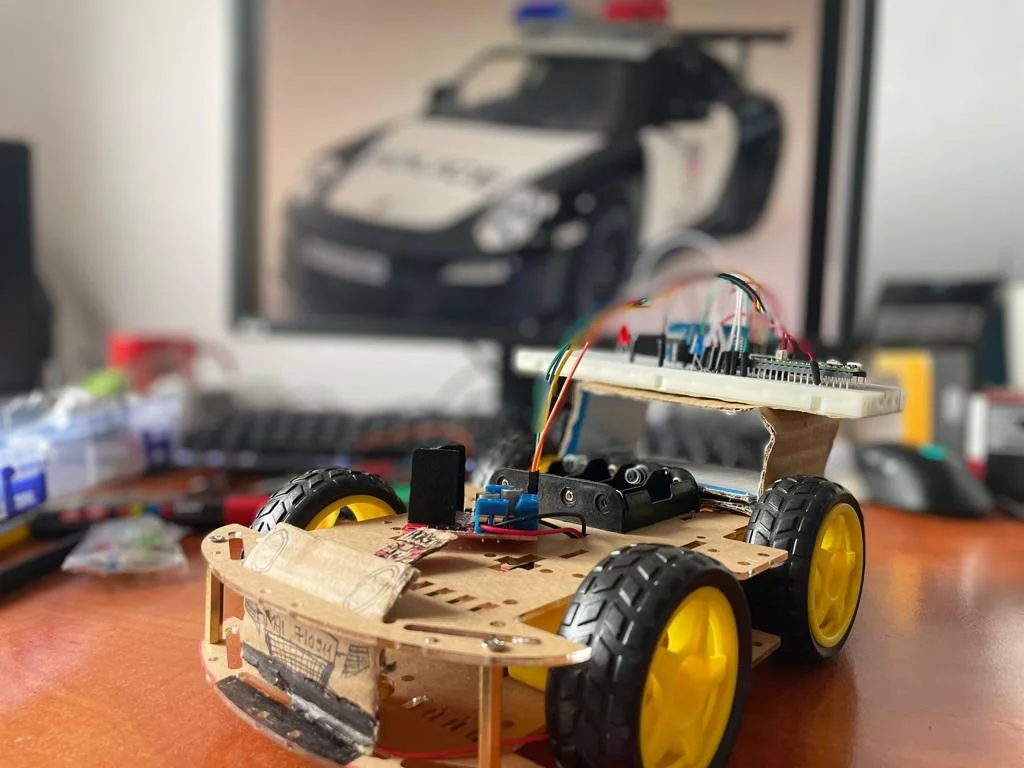
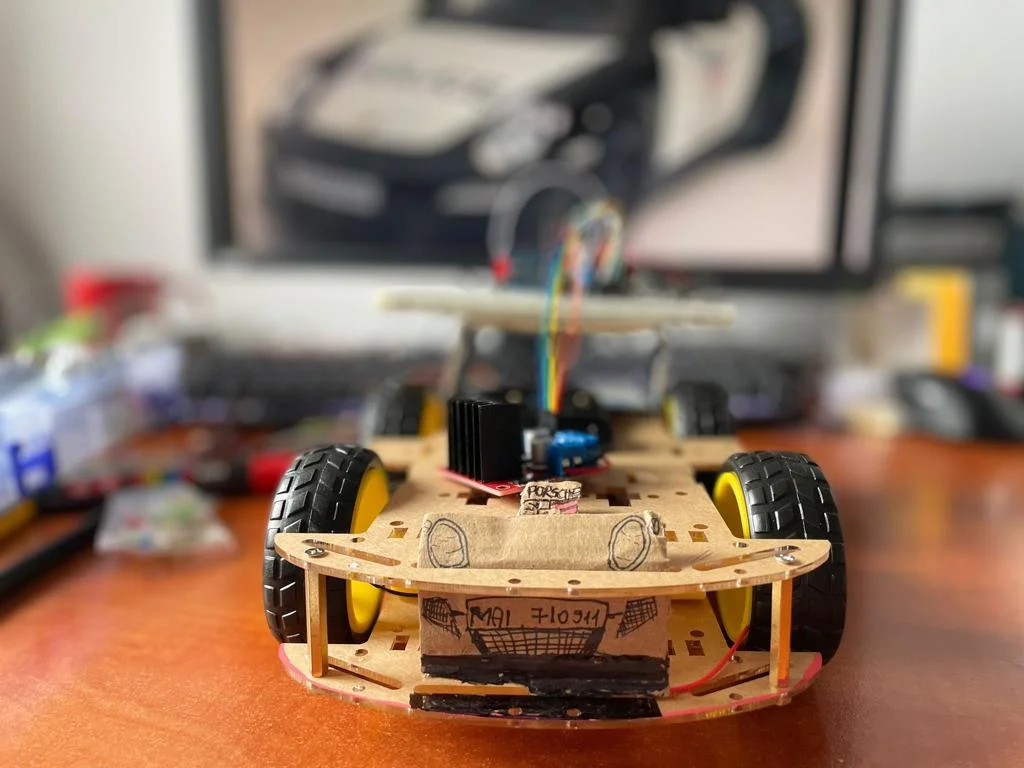
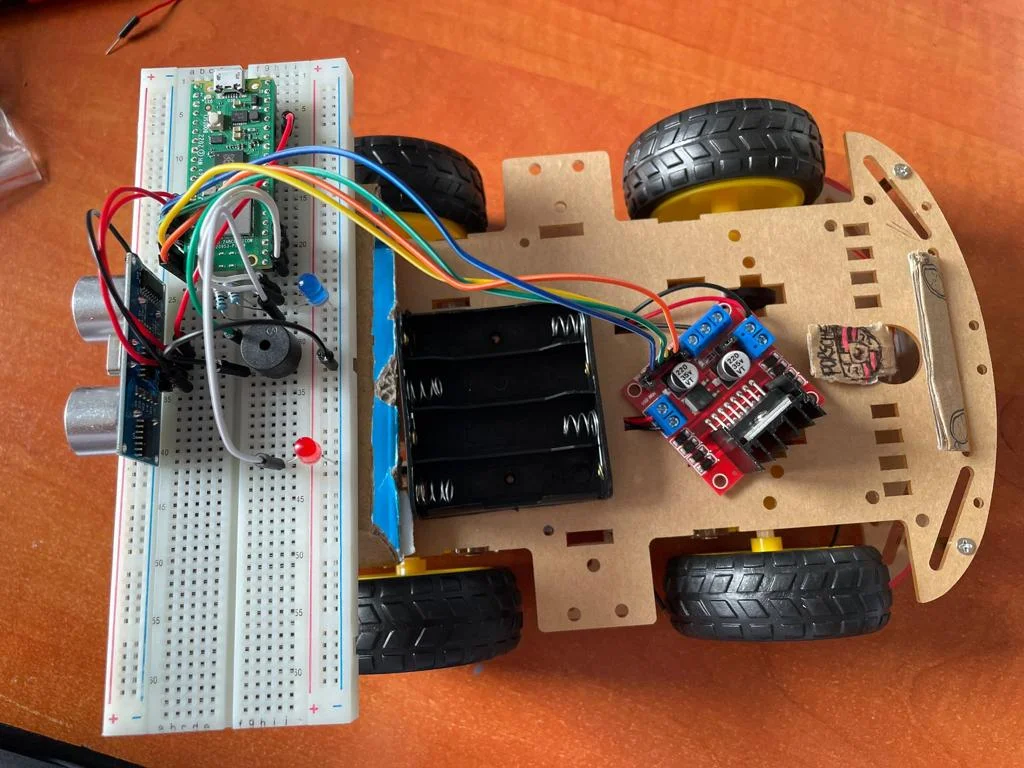
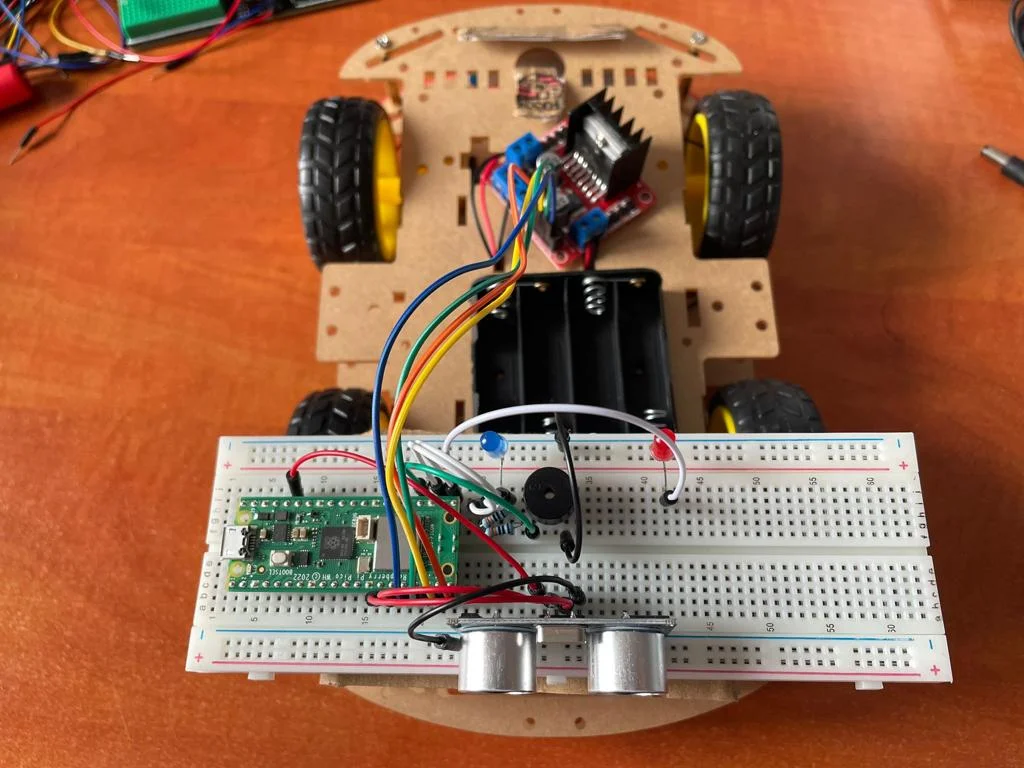
Schematics
Here is presented the KiCad schematic:
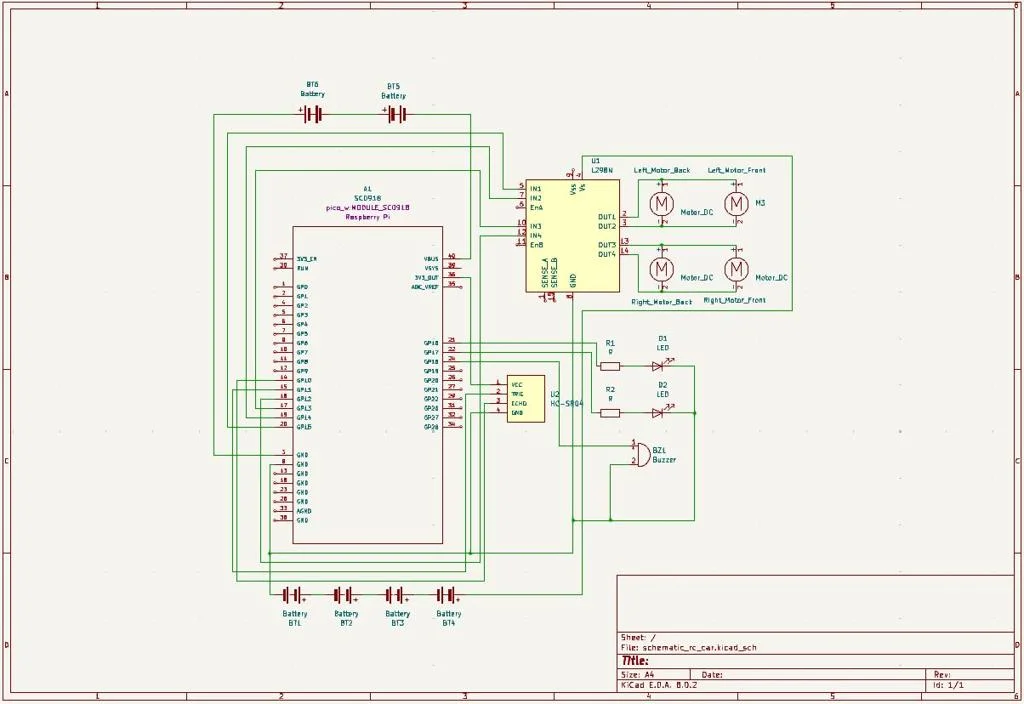
Bill of Materials
| Device | Usage | Price |
|---|---|---|
| Rapspberry Pi Pico W | The microcontroller | 35 RON |
| HC-SR04 Ultrasonic Sensor | The ultrasonic sensor | 9.72 RON |
| L298N Motor Driver Module | The motor driver module | 14.11 RON |
| LED | The LEDs | 0.45 RON x 2 |
| Buzzer | The Buzzer | 3.97 RON |
| Male to male jumper wires | The Wires | 6.98 RON |
| Female to female jumper wires | The Wires | 6.98 RON |
| Power Supply | The Power Supply | 14.90 RON |
| Wheels with motors | The wheels and motors | 8.99 RON x 4 |
Software
| Library | Description | Usage |
|---|---|---|
| embassy | Embassy | An asynchronous executor and Hardware Abstraction Layer (HAL) designed for constructing embedded applications in Rust. |
| embassy-network | Embassy Network | A networking library designed for use with the Embassy asynchronous executor, facilitating network communication within embedded Rust applications. |
| embassy-executor | Embassy Executor | Used for task scheduling and asynchronous programming |
| embassy-rp | Embassy RP | Used for initializing and interacting with peripherals |
| gpio | GPIO | Used for interacting with GPIO pins |
| cyw43 | CYW43 | Used for interacting with the wi-fi chip of the pico |
| HC-SR04 | HC-SR04 manipulation | Used for controlling the ultrasonic sensor |